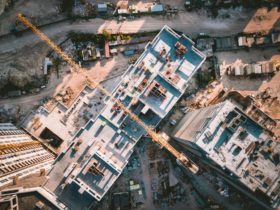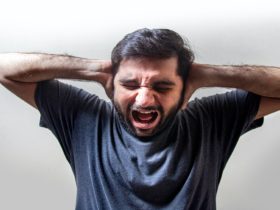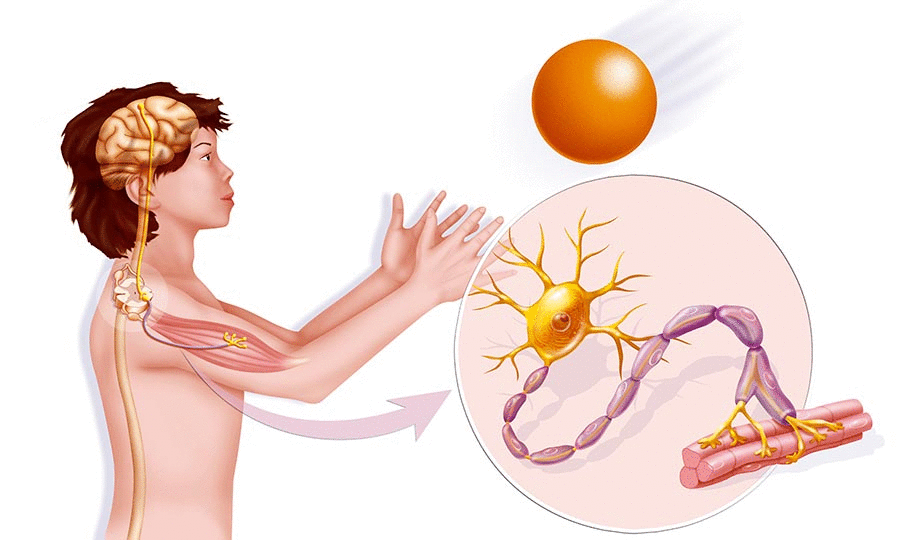In humans, all the body tissues and the nerves that supply those tissues are part of the neuromuscular system. The tissues, cells and the brain must communicate with each other for the body to move. Here, the two main systems involved in body movement are the nervous and muscular systems. The system of nerves sends signals from the brain to various body parts and establishes a well-knitted connection. These connections and signals are vital for establishing a coordinated thought and action process in humans. Let’s further explore the neuromuscular system and neuromuscular junction in humans.
Response to Stimuli
The neuromuscular system is made up of nerve and muscle fibres. This system controls how the body moves and also controls other life processes like breathing. When there are changes in environmental conditions, living things adjust their movements and positions for protection or for a competitive advantage. A stimulus is a change in the environment that causes an organism to react. Usually, a response is a behaviour that follows a stimulus. Sound, light, air, smell, taste, and heat are some examples of common stimuli. Living things often react to stimuli by using their nervous system. It is a complex system of nerves that is responsible for relaying messages from the brain and spinal cord to every area of the body and vice versa. The primary unit of this system is the neurons or nerve cells, which serve as mediators in the signalling process.
Neuromuscular System and Its Functioning
Neurons are the cells found in nerves. Neurons transmit messages or signals from the brain to the body tissues via the spinal cord. These neurons are called motor neurons. A muscle fibre is typically located close to each motor neuron terminal. A neuromuscular junction is a location where they connect. In order for the muscle fibre to contract, the motor neurons release a chemical substance called a neurotransmitter. The release and transmission of these neurotransmitters help in carrying chemical messages across the nerve cells. These messages will invariably aid in breathing, circulation, body movements and feeling sensations.
Neuromuscular Junction and Neuromuscular Transmission
The neuromuscular junction is where muscle fibre and nerve fibre meet at their terminal branches. The motor nerve fibres typically innervate the skeletal muscle fibres. Numerous terminal branches separate each nerve fibre or axon. One muscle fibre is innervated by each terminal branch at the neuromuscular junction.
One motor unit consists of both the nerve and the muscle fibres it innervates. The function is correlated with the ratio of muscle fibres to nerves. A less number of muscle fibre to nerve ratio is needed for precise and delicate operations, such as eye movement. It has 10 muscle fibres to 1 nerve fibre ratio. Likewise, higher muscle fibre to nerve ratios, such as 3000 fibres to one nerve, is needed for simpler movements (leg muscles).
Neuromuscular Transmission
Information travels from the motor nerve terminal through the neuromuscular junction and into the muscle fibre through a process called neuromuscular transmission. It is the process by which motor nerve impulses cause muscular contraction. Neuromuscular transmission can also be blocked by drugs known as neuromuscular blockers that stop impulses from travelling from nerve fibre to muscle fibre through neuromuscular junctions. These medications are frequently used in surgical and post-traumatic care. For less complicated surgery, neuromuscular blockers are used during anaesthesia to relax the skeletal muscles and induce paralysis.
Similarly, some medications, such as neostigmine, physostigmine and diisopropyl fluorophosphate, can stimulate the neuromuscular junction. These medications render acetylcholinesterase (cholinergic enzyme) inactive. It causes the muscle to be repeatedly stimulated and to contract continuously.
Disorders
The phrase neuromuscular diseases refer to any condition that affects the synaptic communication between a motor neuron and a muscle fibre. These diseases range in severity and fatality, and they can be either inherited or acquired. In general, autoimmune diseases or mutations are the main causes of the majority of neuromuscular ailments.














